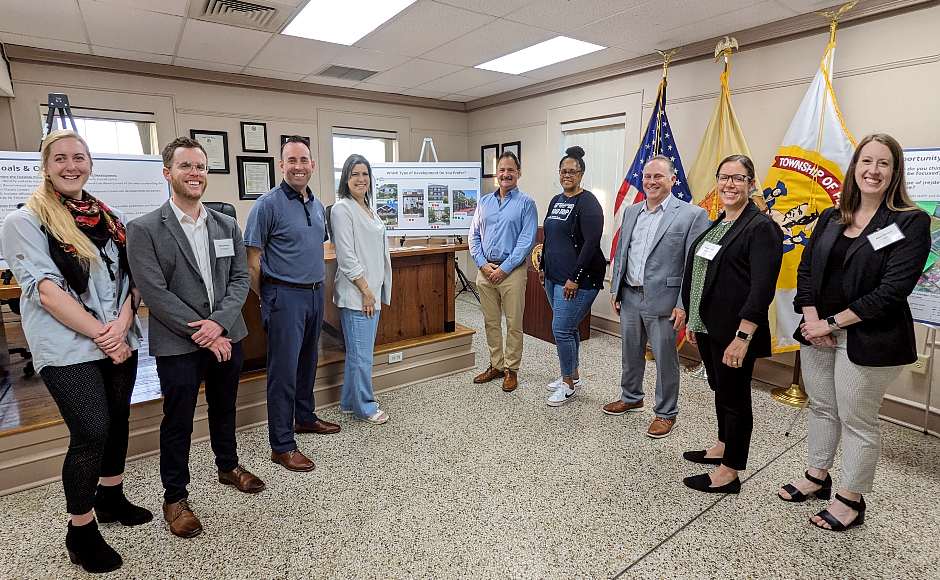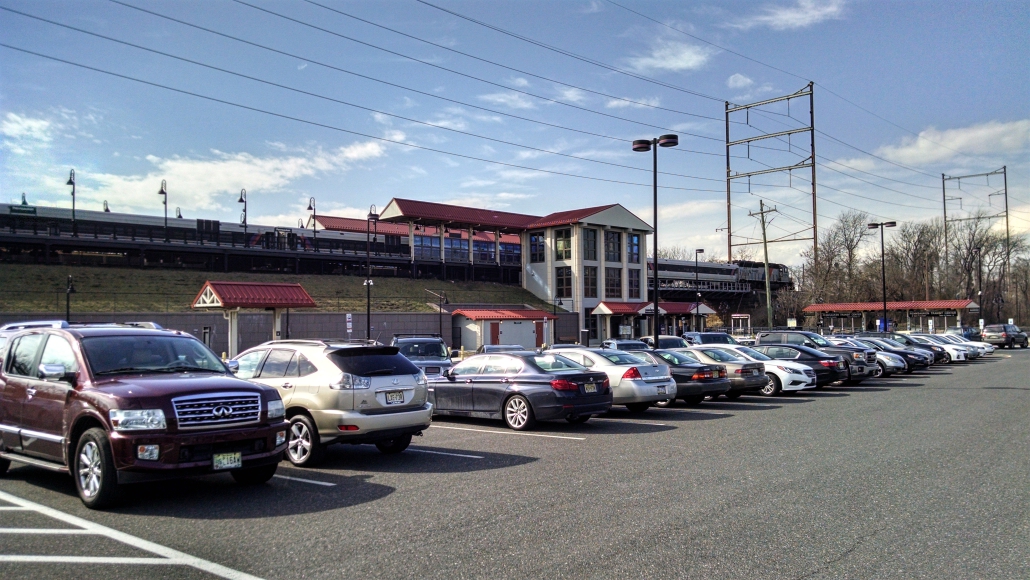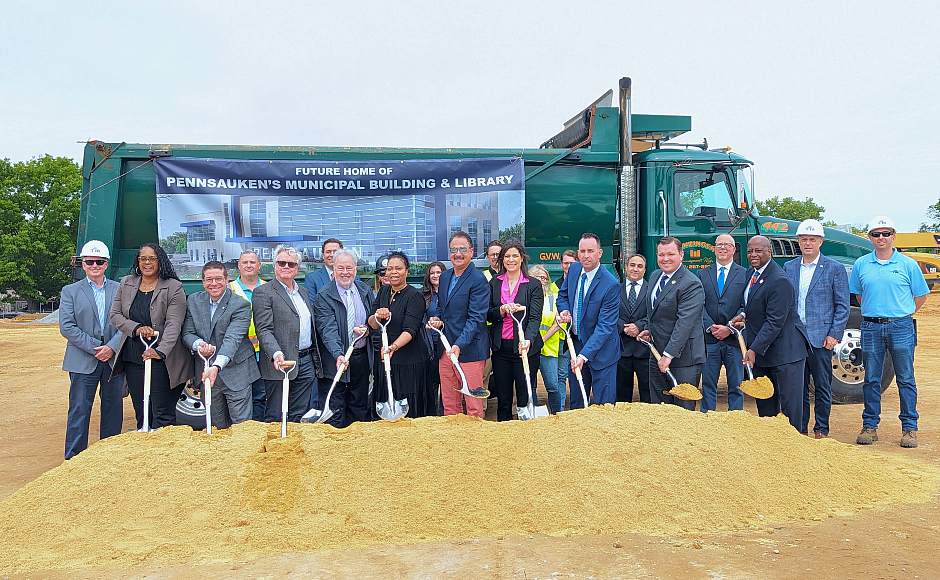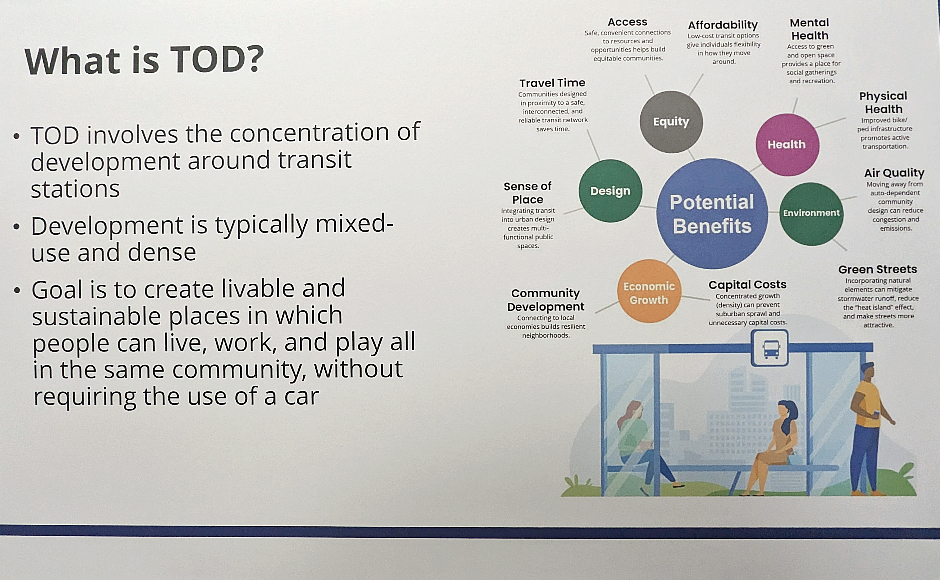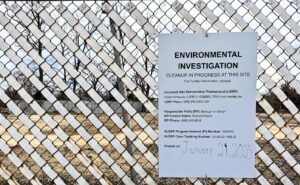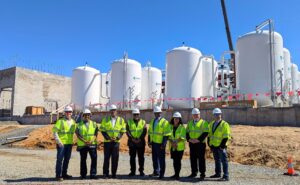The project examines the feasibility of adding housing, retail, and commercial construction at the Pennsauken Transit Center, which officials describe as underutilized for its potential.
By Matt Skoufalos | May 22, 2024
Since its construction in 2013, the Pennsauken Transit Center has connected area travelers to Philadelphia, Trenton, and Camden City, as well as destinations along the Atlantic City and River Lines.
State and local officials believe the center contains untapped potential for activation as a regional transit hub, possibly with housing, shopping, and dining in a walkable context.
In July 2023, the Delaware Valley Regional Planning Commission (DVRPC) awarded a $100,000 Transportation and Community Development Initiative (TCDI) grant to NJ Transit to gauge the potential for TOD at the transit center on Derousse Avenue and within a half-mile of it.
TOD is a community redevelopment strategy that involves designing “compact, walkable, pedestrian-oriented, mixed-use communities centered around high-quality train systems,” according to the Transit Oriented Development Institute.
“This makes it possible to live a lower-stress life without complete dependence on a car for mobility and survival,” the Institute notes.
TOD is also a fundamental component of the NJ Transit Transit Friendly Planning Program, which endeavors to help New Jersey municipalities create better accessibility to mass transit as well as anchoring community amenities around it.
On Tuesday, representatives from NJ Transit and consultancy STV of New York, New York held a public input session at the Pennsauken Township building to receiver community feedback about the project.
Megan Massey, Assistant Director of Transit-Friendly Planning at NJ Transit, said the quarter-mile radius surrounding the Pennsauken Transit Center particularly is “ripe for development.” That could include commercial and residential building types, or a mix of both, with a 20-percent set-aside for affordable housing.
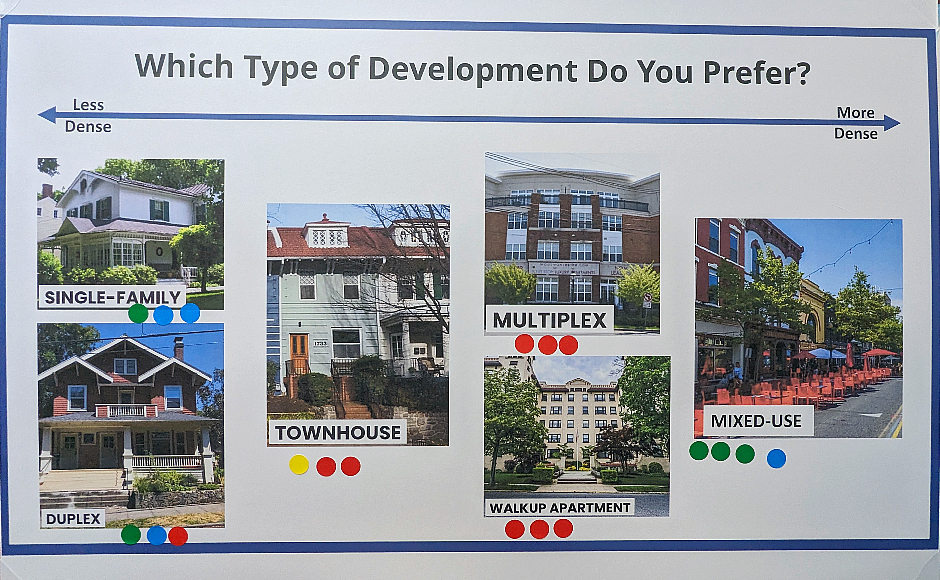
Development choices at the Pennsauken Transit Center redevelopment visioning session. Credit: Matt Skoufalos.
The center itself also has a parking lot that is underutilized currently, and could play a key role in any redevelopment, Massey said. Describing a community vision for the space is critical to directing its future, which is why project planners are keen to hear community feedback.
“We would love to hear people’s desires as to what type of development they would prefer, if any,” she said. “New Jersey is such a mix of places and there are so many different place types. We want to hear from the residents.
“What does Pennsauken identify as?” Massey said. “What do they see that would fit?”
Building on the site could take the form of a variety of types — mid-rise, high-rise, mixed-use, transit village — depending upon public input. Those choices would also dictate corresponding improvements to accessibility to the site, including sidewalk restoration and the establishment of bicycle and pedestrian access.
“We have to reduce vehicle miles traveled and greenhouse gas emissions,” she said, “There are opportunities to access employment centers, entertainment, jobs, school, and healthcare just by transit.”
Michael Swan, Principal Facilities Planner at NJ Transit, said redevelopment at the transit center would help encourage greater use of it. Currently, the station averages 212 weekday riders, but adding more residents there who would be interested in a “car-light” lifestyle could increase those numbers.
“We understand that people can’t live a car-free lifestyle in all of New Jersey, but they can live a car-light lifestyle, and if they are car-dependent, have better access to housing and transit,” Swan said.
Transit-oriented development also “could be a good replacement” for some of the light industrial uses that presently dominate sections of the study area, he said.
“From the few people we’ve spoken to that live in that are, there is interest in less industrial use given the truck traffic,” Swan said.
Creating public amenities
Pennsauken Township officials have declared 2024 a year of redevelopment, with major projects underway, including a new combination municipal building and public library, and a community center on Westfield Avenue.
Local officials already anticipate the possibilities for an upgraded Pennsauken Transit Center.
NJ Transit owns a portion of the parking lot at the center; Pennsauken owns some six acres in the vicinity of Cove and River Roads that fall within the study area. The study area also includes a parcel that connects with the Delaware River, which officials believe could create more public access to the waterfront .
“We’re very big on our outdoor spaces,” Committeewoman Nicole Roberts said. “We’ve been looking to see what we can do with that boat ramp area.”
“We’re excited for this,” Pennsauken Deputy Mayor Jessica Rafeh said. She believes TOD at the transit center could be “more welcoming” for the neighborhood and could create more foot traffic for local businesses.
“We want Pennsauken to be the destination,” Rafeh said. “We want people to come in and spend their time [here].”
“You won’t need a car,” she said; “you could just go across the street and have a meal at a restaurant. “They’re really considering what the neighbors and residents want in that area.”
Pennsauken Mayor Marco DiBattista said he’s excited at the prospect of bringing new business and residents to the township.
He encouraged the public to make their voices heard as the redevelopment plan takes shape by participating in the transit center visioning survey.
“We want to hear people’s ideas,” DiBattista said.
“We’re here to listen. We need stuff that resonates with people.”
The mayor also cautioned that the redevelopment is “not a lightswitch move.” The concept phase will feed a broader redevelopment plan, which the township will then shop to developers, potentially as early as next summer. Planning consultants expect the study to be completed by year’s end 2024.
“To have an opportunity to work with this department is exciting; that’s going to take time,” DiBattista said. “We want to create areas that support our residents.
“We want to create the best services that we can put out there, and set the bar for what people use in the future of other locations.”

